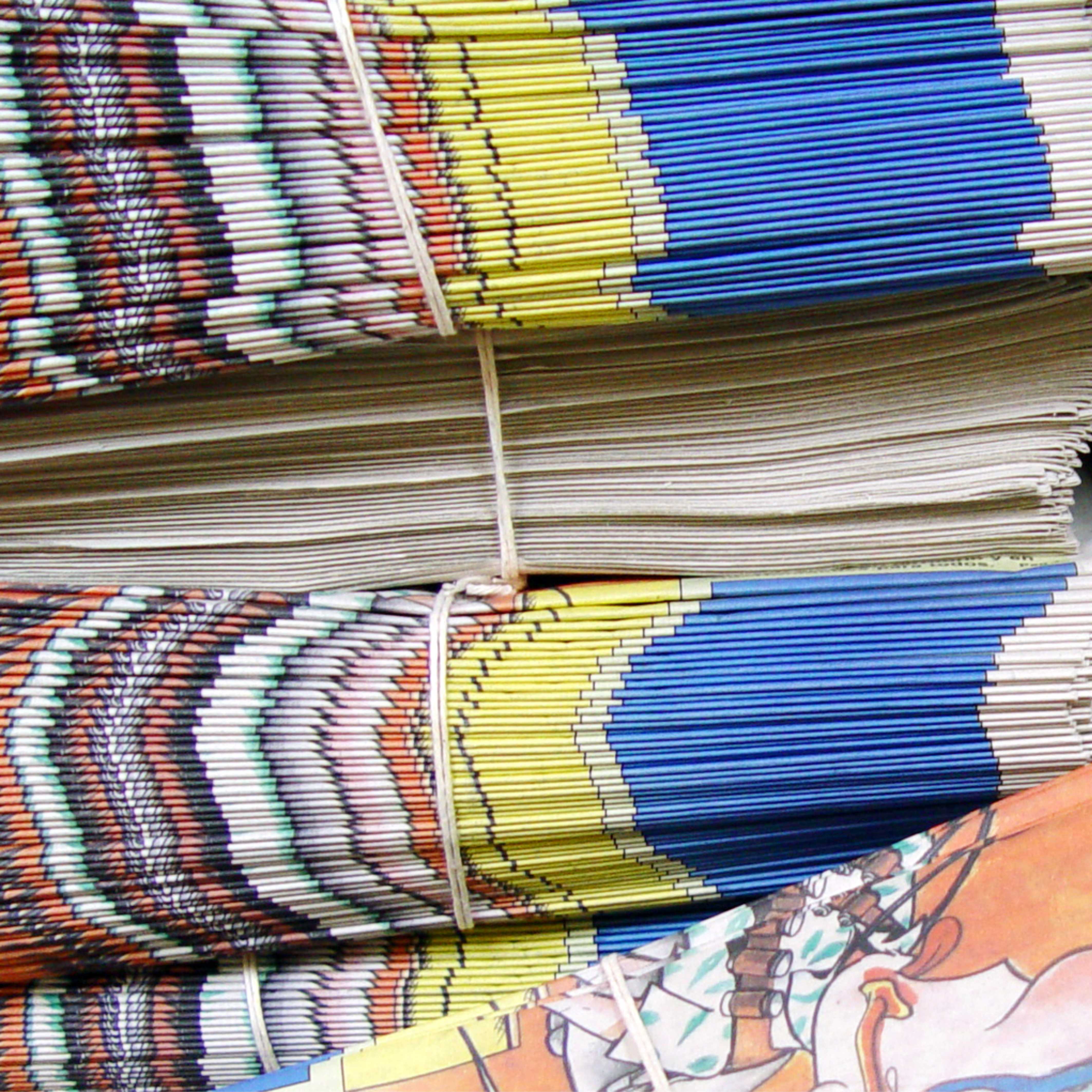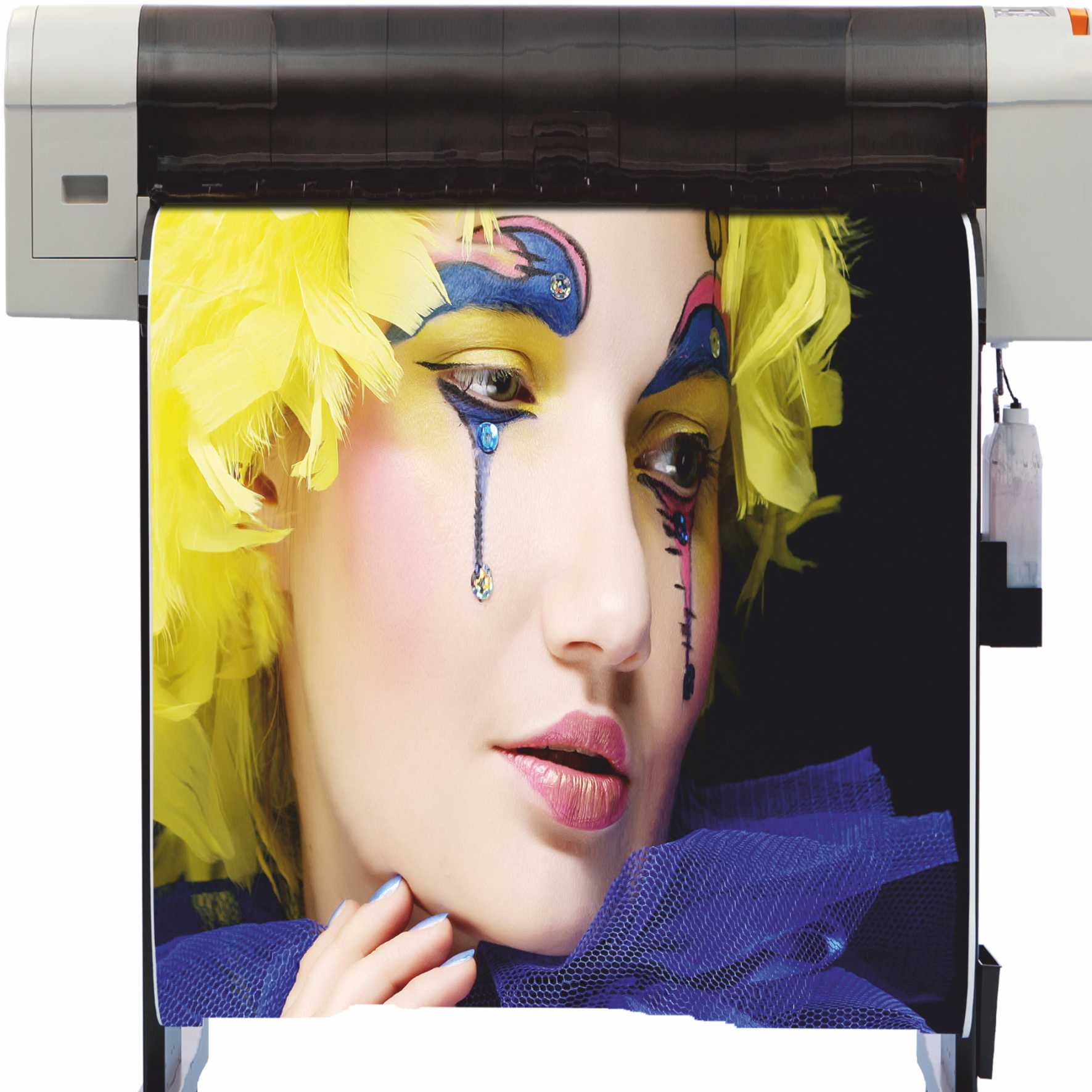New Smart-binder Plus will provide a
30% increase in productivity.
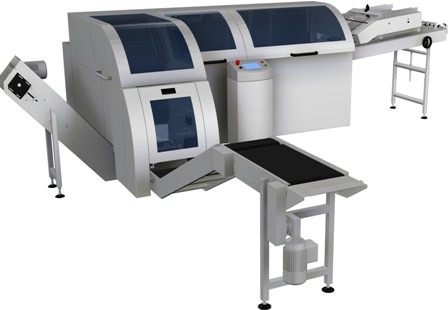 Smart-binder SB-3 ‘Plus’ systemUK based print finishing solutions company IBIS has provided an innovative solution for R+V; one of Germany’s largest insurance companies, in the form of a Smart-binder SB-3 fitted with the unique and patented Individual Sheet Gluing (ISG) system.
Smart-binder SB-3 ‘Plus’ systemUK based print finishing solutions company IBIS has provided an innovative solution for R+V; one of Germany’s largest insurance companies, in the form of a Smart-binder SB-3 fitted with the unique and patented Individual Sheet Gluing (ISG) system.
R+V produce more than a million highly-personalised insurance policy booklets at its headquarters in Wiesbaden. The company choose the ISG binding technique because of its ability to produce booklets up to 10mm thick, which lay flat for envelope inserting, and for the additional page security which this gluing process provides.
R+V have been using the original IBIS Smart-binder SB-3, with maintenance and support from IBIS reseller partner Kern GmbH, and have now ordered a new Smart-binder SB-3 ‘Plus’ system via Kern. This will be fed from a new high-speed Kern roll unwinder and web cutter. This new Smart-binder Plus will provide a 30% increase in productivity while continuing to produce high quality personalised digitally printed policy documents containing between four and 180 pages, with a separately fed cover.
Christoph Hees, Head of the Print Centre for R + V, said: “We first took an IBIS in 2005 as part of a major rebranding exercise. This included improving the face of documents and policies to bring more worth and value for our customers. There were a lot of steps to reach this goal and the IBIS (Smart-binder SB-3) has been an important component. It provides integrity and security through individual sheet gluing, which also looks much better than wire stapling. We are now able to produce good looking policies for our customers at high speed and with high value.
“The new IBIS will enable us to increase productivity by 30%, and further improve our ability to personalise insurance policy documents. The IBIS has been working extremely well for the last seven years, so we know we are taking no risk with a further investment in this world-leading technology, which also interfaces effectively with other machinery.”
John Cracknell, Managing Director of IBIS, added: “We specialise in providing highly customised solutions, including integrating modules from different suppliers, which give tangible returns on investments for companies across the globe. Our Smart-binder system creates flat policy documents that can be easily ‘inserted’ by using our unique ISG cold gluing system. The number of pages in the booklets is constantly varied without pausing the binding process. The Smart-binder at R + V produces policies containing from four A4 sheets right up to 180 pages (approx 9 – 10mm thick). No other system in the world can do this.
“IBIS has built its reputation on providing unique solutions for a diverse range of companies including larger insurance companies such as R+V. We are delighted to receive R+V’s endorsement of the Smart-binder’s success in the form of the new SB-3 ‘Plus’ machine order.”
Follow us on Twitter - @DigiPrintNews
Like us on Facebook www.facebook.com/DPNLive - (click the ‘LIKED’ button/top of page as well)
Copyright © 2013, DPNLIVE – All Rights Reserved.
New HP SmartBooks Toolkit
to be unveiled at the show.
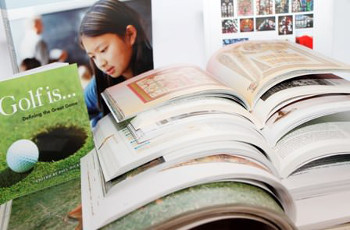 On the HP stand (N500) will be a variety of samples showing the range and quality of books that can be printed using HP digital printing technologiesHP has announced that it will be presenting digital printing solutions for publishers at the London Book Fair, 15 - 17 April 2013, Earls Court, London. It will also demonstrate the new HP SmartBooks Toolkit for calculating cost-effective production methods for books.
On the HP stand (N500) will be a variety of samples showing the range and quality of books that can be printed using HP digital printing technologiesHP has announced that it will be presenting digital printing solutions for publishers at the London Book Fair, 15 - 17 April 2013, Earls Court, London. It will also demonstrate the new HP SmartBooks Toolkit for calculating cost-effective production methods for books.
The HP stand (N500) will showcase a variety of samples showing the range and quality of books that can be printed using HP digital printing technologies. The company said its HP Indigo and HP Inkjet Color Inkjet Web Presses offer publishers the means of producing high-quality, colour-rich art and coffee-table books, hard and soft-cover monochrome books, and short runs of highly specialised books for medical, legal and educational purposes.
"Today's publishers face rapidly changing market and economic conditions," said Paul Randall, market development manager, Publishing Segment, EMEA, HP. "Publishing solutions based on digital printing from HP can help reduce the risks that publisher’s face when bringing titles to market, including overstocking, incurring storage costs and, ultimately, having to pulp unsold books."
HP added that high-end colour books and covers can now be produced in larger formats using the recently launched HP Indigo 10000 Digital Press that handles large-format sheets and can facilitate fast-turnaround book production in short to medium runs. It also pointed out that books produced on HP digital presses may be printed on a wide range of coated and uncoated papers (including recycled stocks) in matt, semi-gloss and gloss finishes, giving publishers and book designers the opportunity to exercise creativity.
The new HP SmartBooks Toolkit, which will be shown for the first time at the London Book Fair, is an in-depth financial modelling tool for publishers to use with individual titles to analyse the financial implications of printing conventionally, digitally, or by both methods at different times over a two-year life cycle.
The concept behind HP SmartBooks is to help publishers plot the different phases of the book's life whether a debut novel or a book from a successfully established writer. HP maintains that this will assist publishing companies in regulating their cash flow through the use of digital printing in associated areas such as reductions in transport and storage costs.
Visitors to this year's show will have an opportunity to meet with HP business development personnel and learn how the HP SmartBook Toolkit could help their businesses.
The marketing strategy which HP is pursuing is to convince book publishers that HP digital printing combines the advantages of offset litho quality with production immediacy and flexibility. This they say allows publishers to respond quickly to market demands and editorial changes and updates - a great advantage for content-sensitive publications like textbooks, law books, travel guides and other books that need to compete with online information.
A further benefit highlighted by HP is that publishers are also able to generate income from their backlists without the major expense of a conventional reprint of thousands of copies. Print runs as low as one can be viable when printing digitally, and backlists need never again be "out of print."
Since their launch, more than 90 HP Color Inkjet Web Presses have been installed worldwide and have printed more than 25 billion pages - with a current rate of a billion pages per month.
HP confirmed that about 250 specialist book printers are using HP digital presses (HP Indigo and HP Color Inkjet Web Presses) in 50 countries across six continents. With the catch phrase "Think Global and Print Local", HP is confident that these digital presses are enabling publishers to adapt their printing strategies, reduce risk and better respond to demand in specific markets.
More information is available at www.youtube.com/hpgraphicarts
Follow us on Twitter - @DigiPrintNews
Like us on Facebook www.facebook.com/dpnlive - click the ‘LIKED’ button/top of page as well
Copyright © 2013, DPNLIVE – All Rights Reserved
Milanese print on-demand specialist
updates production facilities.
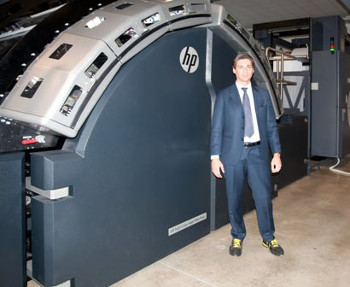 Rotomail Italia Invests in an HP T410 Color Inkjet Web Press to Increase Production, Reliability and FlexibilityRotomail Italia Spa, of Vignate (Milan), Italy, has installed an HP T410 CWP. The investment was made as part of its commitment to providing cutting-edge print-on-demand services, powered by the latest market leading technology.
Rotomail Italia Invests in an HP T410 Color Inkjet Web Press to Increase Production, Reliability and FlexibilityRotomail Italia Spa, of Vignate (Milan), Italy, has installed an HP T410 CWP. The investment was made as part of its commitment to providing cutting-edge print-on-demand services, powered by the latest market leading technology.
Rotomail chose HP as its preferred digital press partner in 2010 when the company installed an HP T300 Color Inkjet Web Press. The two digital inkjet web presses and the company's HP Indigo W7200 Digital Press now give Rotomail significant digital firepower for trans-promotional, direct mail and book production.
"We chose the HP T410 Color Inkjet Web Press because our HP T300 has enabled us to achieve outstanding results on all fronts," explained Alessandro Antonuzzo, marketing manager, Rotomail Italia. "This new press is based on the same technology, but runs at a higher speed and offers a superior print quality. For print quality and productivity I maintain that the T410 Color Inkjet Web Press is the best press currently on the market."
HP said that Rotomail was one of the first companies in the world to use full-colour inkjet print technology and is today considered one of the main European producers of digital colour print direct from electronic data.
"We have been particularly impressed with the flexibility of the HP T-series presses," continued Antonuzzo. "They can be used for applications ranging from transactional print to the highest quality book production. We will use the new T410 Color Inkjet Web Press to print colour transactional communications for clients ranging from financial institutions to utilities companies.
"With this press, a finishing line that we have patented, and a software modification that HP swiftly implemented to meet our requirements, we can print books of different formats from the same web of paper. We will be able to increase our presence in the publishing print-on-demand sector, printing covers on the HP Indigo W7200 Digital Press which enjoys the same functionality. This is a remarkable level of flexibility," Antonuzzo concluded.
The HP T410 Color Inkjet Web Press can print 100 per cent variable data content at speeds up to 5,000 colour pages a minute and almost 7,000 mono pages a minute, with a scalable web width up to 1066.8mm. The press can print up to 140 million A4 format colour images a month at up to 183m/min (175 million in mono at 244m/min). HP T-series presses are equipped with new advanced technology inkjet print heads and with nanotechnology pigment inks capable of helping to achieve high speeds without compromising quality.
For further details go to: http://h10088.www1.hp.com/cda/gap/display/main/index.jsp?zn=gap&cp=20000-13698-25954-27038-29265%5E365768_4041_100__
Follow us on Twitter - @DigiPrintNews
Like us on Facebook www.facebook.com/dpnlive - click the ‘LIKED’ button/top of page as well
Copyright © 2013, DPNLIVE – All Rights Reserved
Increase productivity and turnaround times
achieved by inline priming.
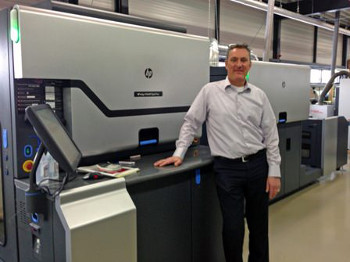 Cees Schouten, technical director at Geostick, with one of the three HP Indigo WS6600 Digital PressesGeostick B.V., of the Netherlands, has installed three HP Indigo WS6600 Digital Presses for the purpose of extending uptime and to increase productivity due to the current demands of the label market.
Cees Schouten, technical director at Geostick, with one of the three HP Indigo WS6600 Digital PressesGeostick B.V., of the Netherlands, has installed three HP Indigo WS6600 Digital Presses for the purpose of extending uptime and to increase productivity due to the current demands of the label market.
All of the new presses include the In-Line Priming (ILP) option, which uses a water-based primer to treat standard paper and also synthetic substrates. This feature was a particular selling point for Geostick commented HP, as it helps reduce turnaround times by eliminating the extra step of off-line substrate preparation.
“We had three HP Indigo WS6000 Digital Presses, which we were very pleased with, but we were ready to upgrade and the obvious choice was the HP Indigo WS6600,” said Cees Schouten, technical director, Geostick. “Previously, we were priming everything off-line, but knew that inline priming would be much more efficient and enable us to lower costs, so we chose to have this feature on the presses. We can do more in the same amount of time, which means we can offer our customers shorter turnaround times.”
HP added that Geostick was impressed with the short setup time of the HP Indigo WS6600, and also its ability to print on substrates from 12 - 450 microns including paper and plastic. Schouten described the press as a versatile, highly productive offset press, ideal for printing labels for its major customers in the chemical and food industries, and labels for logistics applications that may include barcodes and QR codes that are read electronically. Also according to Geostick, the automatic calibration on the HP Indigo WS6600 Digital Press has improved compared to earlier models, giving the press more stability on repeat lengths.
“One huge benefit of the HP Indigo WS6600 is that the cost of printing has been reduced, so we are spending less per square metre,” commented Schouten. “We can pass that price reduction on to our customers to maintain our competitive edge. The press requires little or no operator intervention, so money is also saved there.”
Geostick wants to retain flexibility for its customers, so the ability for it to deliver high-quality results, quickly, and in varying run-lengths, number of colours and range of substrates is very important. Recently, the company was able to take on a large project, 20,000 labels to be produced in 24 hours for a customer. With the new HP Indigo WS6600 Digital Press, it was able to take on the work and meet the challenge.
“More uptime on the printer means we can take on more work, but still offer quick turnaround times,” concluded Schouten. “We are expecting our sales to increase by more than 10 per cent following the installation of all three presses, and we are looking forward to welcoming new customers.”
Geostick has been an HP Indigo press user since 2005 when it purchased an HP Indigo press ws4050.
The HP Indigo WS6600 Digital Press has a printing speed of up to 30 metres per minute in full colour and also has the new Enhanced Productivity Mode, enabling Geostick to print up to 40m/min in colour.
More information is available at www.hp.com/go/gsb
Follow us on Twitter - @DigiPrintNews
Like us on Facebook www.facebook.com/dpnlive - click the ‘LIKED’ button/top of page as well
Copyright © 2013, DPNLIVE – All Rights Reserved
A tale of ‘like for like’ third party inks.
 Paul Kearney back on track with Eco-Sol Max inks in his Roland VersaCAMMUK based WOWgrafix has seen a dramatic improvement in the performance of its wide format machine since going back to using Roland Eco-Sol Max inks in its VersaCAMM VP-540i. The company, which specialises in van sign writing, signboards, vinyl banners locally and nationally via its website WOWgrafix.net, was approached a couple of years’ ago by a salesman offering a ‘like for like’ third party ink solution for the Roland machine at a very competitive price.
Paul Kearney back on track with Eco-Sol Max inks in his Roland VersaCAMMUK based WOWgrafix has seen a dramatic improvement in the performance of its wide format machine since going back to using Roland Eco-Sol Max inks in its VersaCAMM VP-540i. The company, which specialises in van sign writing, signboards, vinyl banners locally and nationally via its website WOWgrafix.net, was approached a couple of years’ ago by a salesman offering a ‘like for like’ third party ink solution for the Roland machine at a very competitive price.
Says Paul Kearney, proprietor of WOWgrafix: “While we had never experienced any problems with Roland inks we were using, the price of the ‘like for like’ solution seemed too good to turn down. At the time, we had been looking across the business at where we could create savings, so the cost of consumables was an obvious area for these savings to be made.”
A sign of things to come
At first, Mr Kearney says, the inks seemed to work well, although, they did notice that one of the side effects were that the inks emitted a very strong odour. And, while the inks were branded as bio inks, which made them sound safer and gentler, they were, in reality, strong solvent-based and very corrosive on the machine’s parts.
Soon afterwards, WOWgrafix got its first signs of the problems to come: the heads started needing cleaning more often, followed by blocked nozzles and deflections. Then the cleaning cycles on the machine became so frequent it started impacting on production schedules. After this, the banding on the prints started.
“At this point,” continues Mr Kearney, “we weren’t aware it was the inks causing all the problems, so we called in a local engineer and we replaced cap tops and dampers (more than once), as well as the wipers. All this failed to solve the problem so the conclusion was that it had to be the inks. When we spoke to our ink supplier, it turned out some of the inks had already been removed from the market, which immediately set off alarm bells.
“However, they assured us they could solve the problem and supplied us with new inks and sent out another engineer to change the dampers once again but the damage was now done to the heads. The supplier claimed it was down to wear and tear, but I knew it couldn’t be as the volume of work the machine does didn’t tally with the extent of the problems.”
 Eco-Sol Max ink Mr Kearney says every step of the way was a battle, and exasperated, he posted the problem on a sign maker’s forum. And, while this made the third party ink supplier take more action to assist, the banding problem continued and the recommended solution was that WOWgrafix should always print on high quality setting, which was just not practical from either a cost or production perspective. Soaking the heads every weekend for six weeks was also proposed and tried, but just led to the use of a lot of cleaning fluid with no improvement to the heads. The supplier finally agreed to replace two heads, but this still left two damaged heads in the machine.
Eco-Sol Max ink Mr Kearney says every step of the way was a battle, and exasperated, he posted the problem on a sign maker’s forum. And, while this made the third party ink supplier take more action to assist, the banding problem continued and the recommended solution was that WOWgrafix should always print on high quality setting, which was just not practical from either a cost or production perspective. Soaking the heads every weekend for six weeks was also proposed and tried, but just led to the use of a lot of cleaning fluid with no improvement to the heads. The supplier finally agreed to replace two heads, but this still left two damaged heads in the machine.
When good service and support really counts
“Finally, we’d had enough” says Mr Kearney. “We invited Roland back in to see us. They replaced the other two heads, cap tops, dampers, and wipers – and made the machine factory new again. They flushed the system fully and correctly calibrated the machine, and put us back on to Eco-Sol Max inks. After the constant frustrations of the last nine months we were now back on track and it took Roland DG just a single day to fix all the problems. We now have a 12 month RolandCare warranty too for extra peace of mind. But the peace of mind really comes from knowing that when I turn up each day, the machine is going to work and I can service my customers.”
Mr Kearney says the whole experience of going to a third party ink supplier was a nightmare. So much time and money was wasted on cleaning, engineers, banding problems and inks. And when customers who have always been happy are then not happy with the quality of the work and start sending it back, the business begins to really suffer. “It’s a salient lesson that saving money at the point of purchase might actually cost you down the line. You get what you pay for, that’s for sure. The wide format machine is the sign makers’ life line to success, and it’s just not worth the risk of damaging this essential business equipment and customer relationships to ‘save’ a few pence per litre.
“Since we’ve moved back to Roland inks, business, and the machine, has been great. No banding, no break downs, happy customers and a productive business. I’m glad to be back with Roland,” Mr Kearney concludes.
For more information on Roland DG’s Eco-Sol Max inks, visit www.rolanddg.co.uk/EcoSolMax
This email address is being protected from spambots. You need JavaScript enabled to view it." mce_' + path + '\'' + prefix + ':' + addy20584 + '\'>'+addy_text20584+'<\/a>';
//-->
Case study on behalf of Roland DG
Follow us on Twitter - @DigiPrintNews
Like us on Facebook www.facebook.com/dpnlive - click the ‘LIKED’ button/top of page as well
Company becomes first Italian printer to use
press to print newspapers on standard newsprint.
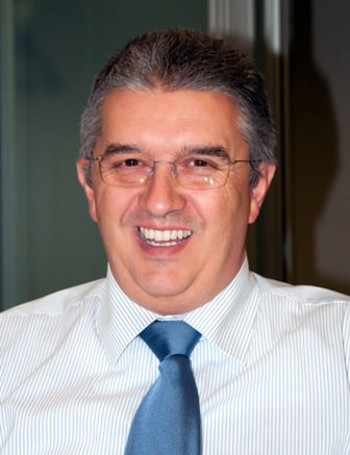 Dario De Cian, Managing Director, CSQCentro Stampa Quotidiani Spa (CSQ), of Erbusco in Lombardy, Northern Italy, has purchased an HP T230 Color Inkjet Web Press to enable it to take advantage of a growing demand from newspaper publishers for full-colour digital production and localised inserts.
Dario De Cian, Managing Director, CSQCentro Stampa Quotidiani Spa (CSQ), of Erbusco in Lombardy, Northern Italy, has purchased an HP T230 Color Inkjet Web Press to enable it to take advantage of a growing demand from newspaper publishers for full-colour digital production and localised inserts.
The company primarily prints newspapers and inserts for a local client base. During the summer months it also prints for a number of foreign newspapers when the tourist season is at its peak. Outside this season, conventional print runs of these newspapers for the tourist areas of the Mediterranean are no longer economically viable.
"We have always adopted cutting-edge technology right from the start of our business," explained Dario De Cian, MD of CSQ. "Now we are adopting the latest digital technology so we can offer our overseas clients the opportunity to publish all year round."
CSQ said that because the new digital press offers them no variation in quality, it will print the tourist titles conventionally from June to September and use the HP T230 press for the rest of the year, using the same newsprint substrate. An added benefit is that the newspapers delivered will be that day's edition and not the previous day's, which was formerly the case.
"Another reason for this investment in digital was to meet the demands of our Italian customers looking for short-run solutions for local editions," De Cian continued. "Now, thanks to the HP T230, we can print short runs digitally from 500 up to 2000 copies to localise sections of their publications and integrate them with conventionally printed sections."
This new service can be used to insert information for a specific city or area, or produce variable editions of a property newspaper based on local distribution requirements.
"We chose the HP T230 inkjet web press after nine month’s analysis of all available technologies," said De Cian. "The company chose this solution because it allows us to achieve a level of quality equivalent to traditional offset. Thanks to the HP Bonding Agent technology used in the web printing process, it is also the only solution on the market that completely eliminates the problem of show-through on the lightweight and porous papers of 45gsm typically used for newspapers.
"With the HP T230 we can use the same paper as on the web offset presses and work to the same formats. The Hunkeler inline finishing system will also enable us to profitably use the press for the three services that we plan to offer initially: printing and folding newspapers, covers and flyers. The system is integrated with our other finishing equipment which will enable us to automatically combine offset and digital products ready for despatch," De Cian concluded.
The HP T230 Color Inkjet Web Press can print at speeds of up to 122 m per minute, with a scalable web width up to 558 mm and a print width of up to 520 mm. HP maintains that the press was designed for performance; the result is that it can print up to 50 million mono and four-colour letter-sized equivalent images per month.
"At CSQ, we see how newspaper publishers and print service providers can change the business model for existing products," said Aurelio Maruggi, vice president and general manager, Inkjet High-speed Production Solutions, HP. "HP Color Inkjet Web Presses can help publishers make information as immediate and relevant as digital media through cost-effective short runs, localised editions and printing for local markets anywhere in the world."
More information is available at www.hp.com/go/gsb
Follow us on Twitter - @DigiPrintNews
Like us on Facebook www.facebook.com/dpnlive - click the ‘LIKED’ button/top of page as well
Copyright © 2013, DPNLIVE – All Rights Reserved
Dedicated application-focussed areas and
latest breakthrough technologies on show.
 HP’s demonstration & training facility is celebrating its fifth anniversary with revamped and enlarged premisesHP has revamped and enlarged its demonstration and training facility for its Graphics Solutions Business to celebrate the fifth anniversary of the premises. It will now accommodate a fleet of the most recently-launched HP printing solutions.
HP’s demonstration & training facility is celebrating its fifth anniversary with revamped and enlarged premisesHP has revamped and enlarged its demonstration and training facility for its Graphics Solutions Business to celebrate the fifth anniversary of the premises. It will now accommodate a fleet of the most recently-launched HP printing solutions.
Located in Sant Cugat del Vallès, near Barcelona, the HP EMEA Graphic Arts Customer Centre is a dedicated, 4,026 m2 multi-purpose suite showcasing printers and presses from the HP Indigo, Designjet, Scitex and HP Inkjet Web Press portfolios, as well as the numerous applications achievable with these technologies.
HP uses the centre to host various training seminars, open houses and demonstration days for a broad audience, including customers and prospects, dealers, distributors, HP staff members and journalists. In 2012, the centre staged more than 1000 production demonstrations and hosted 60 customer events.
Dedicated application-focussed areas
As part of the expansion, the HP Graphic Arts Customer Centre has been re-designed to focus on creative applications particularly for print service providers (PSPs) in order to demonstrate to them how they can broaden their service capability and develop revenue streams.
These focus areas include a digital book store and a café lounge decorated with vibrant large format interior graphics achievable with HP Latex Ink Technologies. Another area reflects HP's commitment to the photo market and includes photo books, calendars and photo cards produced with HP Indigo presses, as well as large-format photo-quality prints from HP Designjet Z-Series printers.
Latest breakthrough technologies
In addition to resident flagship devices such as the HP Scitex FB7600 Industrial Press and the HP Designjet L28500 Printer, the centre will soon include the new HP Indigo 10000 Digital Press which HP maintains is the industry's largest-format, most productive sheet-fed digital press.
Another feature of the revamped facility will be the ability to provide visitors with a close-up look at the cutting-edge features of forthcoming solutions earmarked for commercial availability in late 2013. These include the roll-to-roll HP Indigo 20000 Digital Press for flexible packaging, as well as the sheet-fed HP Indigo 30000 Digital Press for mainstream folding carton applications.
Commenting on the new-look HP EMEA Graphic Arts Customer Center, Manel Martinez, vice president and general manager, EMEA Graphics Solutions Business, HP, said, "HP remains ahead of the field in bringing to market breakthrough printing solutions that help drive profitable growth for customers and sharpen their competitive edge.
"It is vital that we offer an environment that displays our proposition while providing maximum visibility and access to those next-generation technologies that can help customers fulfil their business objectives," he concluded.
More information is available at www.youtube.com/hpgraphicarts
Follow us on Twitter - @DigiPrintNews
Like us on Facebook at www.facebook.com/dpnlive
Copyright © 2013, DPNLIVE – All Rights Reserved
Investment made to take digital offering into the future.
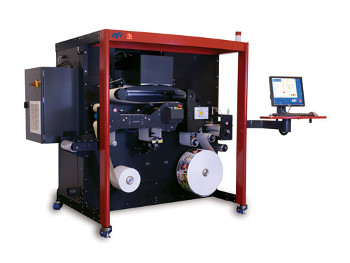 EFI™Jetrion® 4830 UV inkjet systemA leading label converter in the Netherlands has increased its existing digital production capabilities with the installation of an EFI™Jetrion® 4830 UV inkjet system. Kolibri of 's-Heerenberg invested in the high-speed printer last October and the company says that it is now proving to be a valuable addition to its core strategy of supplying innovative results across a broad range of narrow-web applications.
EFI™Jetrion® 4830 UV inkjet systemA leading label converter in the Netherlands has increased its existing digital production capabilities with the installation of an EFI™Jetrion® 4830 UV inkjet system. Kolibri of 's-Heerenberg invested in the high-speed printer last October and the company says that it is now proving to be a valuable addition to its core strategy of supplying innovative results across a broad range of narrow-web applications.
Founded in 1964, Kolibri has always had a philosophy of continuous innovation through its services, and in the technology in which it invests in order to set itself apart from competitors.
An active FINAT member, the company is widely regarded as a pioneer in the adoption of digital UV inkjet technology in the Netherlands. EFI maintains Kolibri is now benefiting from the Jetrion 4830's UV-curable inks and versatility across different label stocks. The system is known for its lean production, the elimination of plates and complex make-ready, and a huge reduction in waste.
"We believe that our company's investment in the Jetrion 4830 is a very good choice as it fits into plans to take our digital offering into the future," said Jan Frederik Vink, CEO of Kolibri. "This label solution from EFI gives us a rapid return on investment thanks to its low cost of ownership, high quality results and the ability to accommodate shorter run jobs, saving time, minimising make-ready and improving profitability."
This is echoed by Frank Janssen, regional sales manager Jetrion, who commented: "Label converters increasingly need the best printer efficiency in order to stay competitive and, with the growth in demand for shorter runs, the Jetrion series of UV-curable digital inkjet systems is ideally positioned for versatile production."
Follow us on Twitter - @DigiPrintNews
Like us on Facebook at www.facebook.com/dpnlive
Copyright © 2013, DPNLIVE – All Rights Reserved
Latest investment is a step up to the next level in digital production.
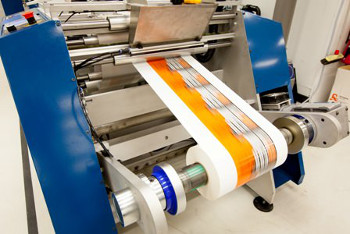 Domino's N600i digital label printer in production at Reynders Domino, headquartered in Cambridge, UK has announced that it has installed the first Domino N600i digital colour label press at Reynders Label Printing’s Belgium production facility.
Domino's N600i digital label printer in production at Reynders Domino, headquartered in Cambridge, UK has announced that it has installed the first Domino N600i digital colour label press at Reynders Label Printing’s Belgium production facility.
Established in 1959, Reynders has since expanded to become one of the leading label specialists in Europe with six specialised printing divisions and eight production facilities spread throughout Europe and Asia.
The company has over 60 printing presses and more than 450 printing stations covering flexography, offset, letterpress, screen, dry toner, wet toner and ink jet printing technologies. This latest installation is a direct result of Reynders focus on maintaining its leading position through investment in the very latest label printing equipment as Chief Executive Officer Marc Reynders explained.
“Over the past few years, label printing has been facing new challenges with customers demanding ever tighter delivery deadlines, shorter average run lengths, more personalised data; but still the highest quality of end product,” he said. “As a result, we needed to find solutions that can not only cope with these changing demands, but that also means adjusting our service offering for our customers. It ultimately helps us to move our business forward in line with the changing dynamics of the industry.”
Marc and his team first saw an early technology demonstration of the N600i at Ipex 2010 and liked what they saw.
“We already had a number of HP Indigos, the latest Xeikon technologies and three Agfa Dotrix digital label presses all of which were doing a good job,” continued Marc, “But to take Reynders to the next level in digital label production we needed a solution that could offer high quality digital printing at significantly increased speeds. The N600i was just what we were looking for.”
 Marc Reynders CEO of Reynders Label Printing The Domino N600i four colour digital label press offers a native 600dpi print resolution and uses one of the smallest drop sizes (6pl) to deliver high quality output onto a range of coated paper and plastic label stocks, and operates at speeds of 50-75 metres per minute. Combined with a standard 333mm (13”) wide web width it provides up to 1,500 m2 of print per hour. In addition, by varying the droplet sizes delivered from a single print head combined with the composition of the ink, the N600i can reproduce a wide colour gamut including over 80 per cent of the pantone colour range.
Marc Reynders CEO of Reynders Label Printing The Domino N600i four colour digital label press offers a native 600dpi print resolution and uses one of the smallest drop sizes (6pl) to deliver high quality output onto a range of coated paper and plastic label stocks, and operates at speeds of 50-75 metres per minute. Combined with a standard 333mm (13”) wide web width it provides up to 1,500 m2 of print per hour. In addition, by varying the droplet sizes delivered from a single print head combined with the composition of the ink, the N600i can reproduce a wide colour gamut including over 80 per cent of the pantone colour range.
With so many label press technologies installed across Reynders multiple sites, the fact that Domino had integrated the Esko front end into the N600i was an added appeal to Reynders and assisted with its integration.
“We already worked with the Esko workflow and this together with the intuitive user interface made working with the N600i so much more straightforward,” said Marc.
Installation didn’t go without its challenges, especially with the company agreeing to be a beta test site for Domino’s N600i. “It’s fair to say that with any beta site, installation can take longer than usual, but we are delighted with the outcome,” confirmed Marc. “We always had complete confidence in Domino throughout the process. They listened to our requirements, were extremely helpful in exploring ways to overcome any issues and conducted the installation with the utmost professionalism.”
Within a short time, the operations team had the N600i running at production speeds of 50 metres per minute, a significantly higher rate than the company’s existing digital technologies, and were using the press for new mid-volume applications of up to 3,000 metres, well above the 1,000 metres limit they typically would schedule on digital machines.
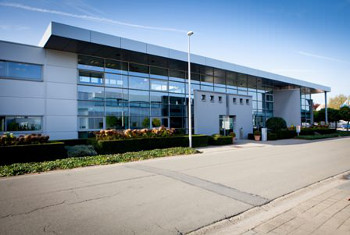 Reynders Label Printing The increased speed of throughput brought additional challenges for the operators, as it meant they could no longer manually check for rejects and quality of output, as was the procedure for the company’s slower running solutions. To overcome this, Reynders installed an automated vision system onto the N600i line that could cope with verification of output at such high speeds, reducing operator intervention with the added bonus of delivering extra production efficiencies.
Reynders Label Printing The increased speed of throughput brought additional challenges for the operators, as it meant they could no longer manually check for rejects and quality of output, as was the procedure for the company’s slower running solutions. To overcome this, Reynders installed an automated vision system onto the N600i line that could cope with verification of output at such high speeds, reducing operator intervention with the added bonus of delivering extra production efficiencies.
To further develop the flexibility and capabilities of the N600i, Reynders and the Domino team are working together to develop new inks as well as review the integration of inline die-cutting technology within the N600i production line.
“Although it is still early days, we are extremely impressed with the capabilities of the N600i,” continued Marc, who is already looking to exploit the potential it can offer in terms of longer term new business opportunities.
“The N600i has certainly lived up to our expectations of high resolution, high quality output at significantly higher operational speeds. The operation has been reliable and we are able to run much longer production jobs than we would normally print with digital technology. In this respect it is more targeted at replacing what we would normally run on flexo machines. If the N600i continues to perform to our expectations and we can achieve all our business goals, we will be considering further investment in this technology in the future.”
Copyright © 2013, DPNLIVE – All Rights Reserved
“Like” us on Facebook at www.facebook.com/dpnlive
“Follow” us on Twitter - @DigiPrintNews

